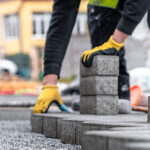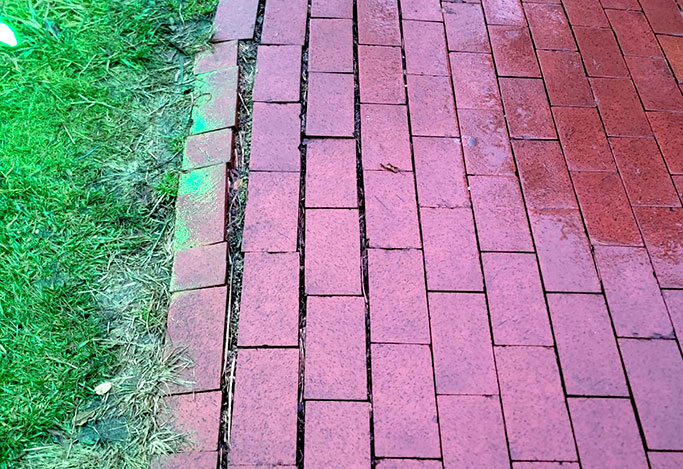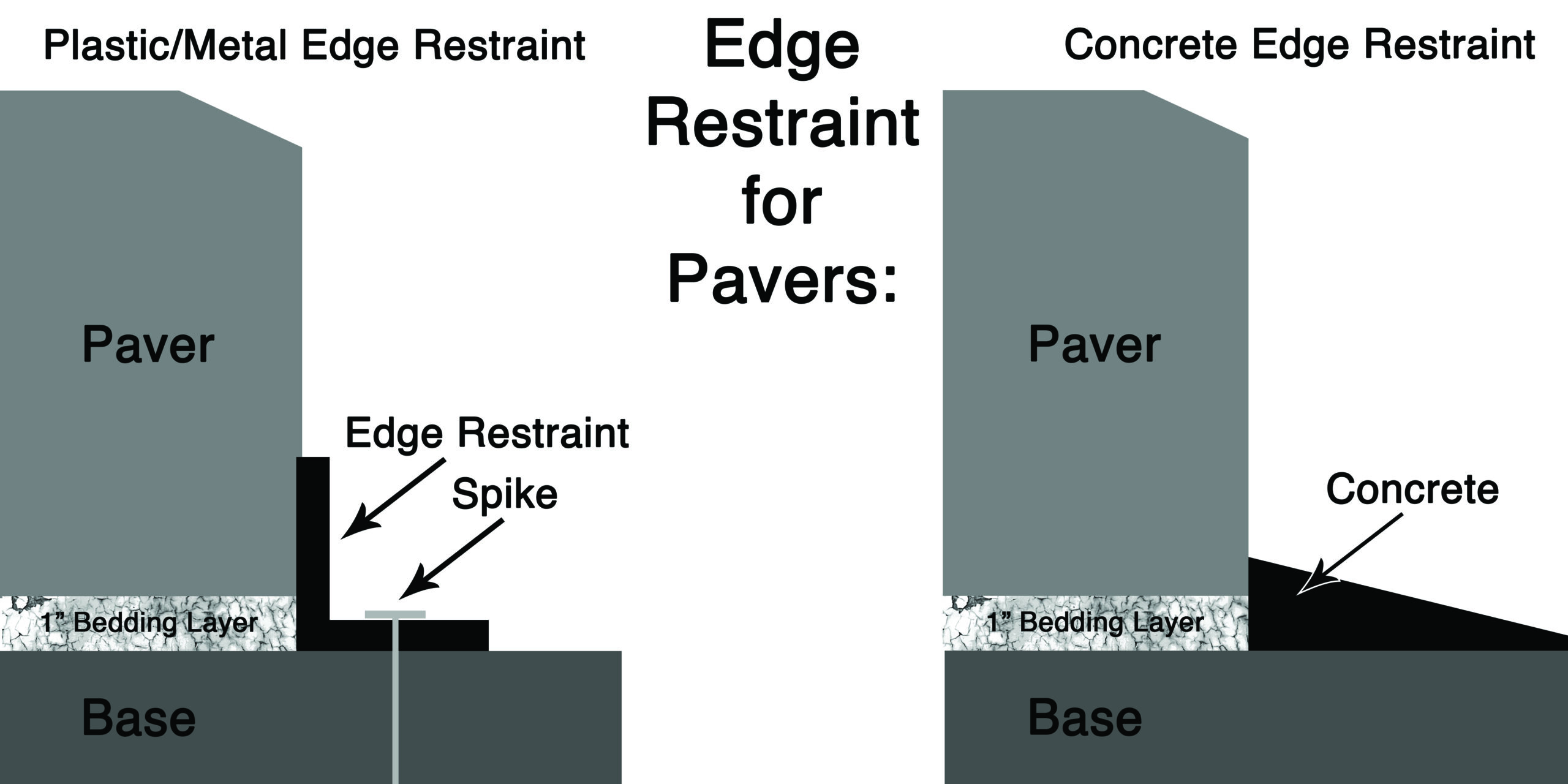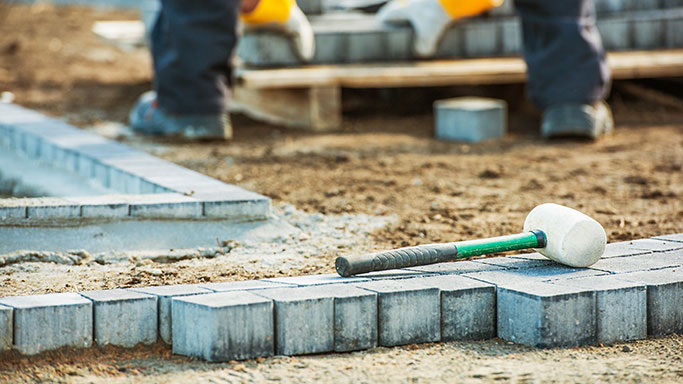An Edgy Topic, Please Practice Restraint

When designing a patio much time and consideration is usually spent choosing the proper paver. Generally, a homeowner will be making an aesthetic choice. Your customer is counting on you to be knowledgeable about the rest of the paver system.
Though unseen and not as exciting as choosing paver color, let's focus on edge restraint. Forces from above push down on the pavers, causing the bedding layer to be squeezed outward. If allowed to migrate out from under the pavers, low spots can form in the paver field and the border of the paver system may completely fail. Edging material contains the outward migration and halts the shifting that may otherwise take place.

Paver edging combats these forces by creating a wall, of sorts, attached to the base aggregate and extending up past the bedding material, but generally not far enough up the side of the paver where it can be seen. It prevents lateral movement of pavers during freeze-thaw cycles and under heavy traffic. There have been numerous improvements of these systems throughout the years, but they have not been without their problems.
(Of course, you do not need to install an edge restraint against hard surfaces, only soft surfaces. That means pavers up against walls, foundations, existing driveways, or any hard surface that can contain those pavers will not need an edge restraint installed.)
The most popular edging materials are concrete and plastic edging.
At Christensen’s we stock Quikcrete bags and BEAST plastic edging. Concrete adheres to the base aggregate and extends up past the bedding sand. Plastic edging has long spikes (ardox spikes) driven down into the base material and ends up oxidizing, grabbing on to the plastic and aggregate.

While these are both popular, both have drawbacks to their use. Subsoil movement is a major cause of plastic edging popping up. The spike is meant to corrode and secure itself on to the fines of the base creating a strong bond to the base and preventing that spike from being pushed up through the plastic restraint. This makes it an ideal restraint for a traditional base preparation that includes fines in the base material, but not for an open graded application where the base is prepared with a clean stone that has no fines.
Concrete adheres to the base aggregate, but can crack with significant heave which will reduce its ability to prevent lateral movement over time. That is why it is recommended to steel reinforce with rebar or fibers added to the concrete mixture. With these additions, the concrete collar will be reinforced to prevent cracking and eventual separation.
A newer option in our market is fiber reinforced edging. It is designed to move along with the base as the subsoil moves. We stock the best value of the newer reinforced concretes, Edgecrete from SEK. Modern fiber reinforced concrete edging materials contain long polymers that hold the concrete together as it flexes with the base material.

The natural elements and Earthly forces provide a malleable, everchanging canvas for us to work with. Even areas that seem flat and stationary change with precipitation and temperature. Hardscape installations should stand up to the elements. A properly installed concrete paver patio or sidewalk is a system. Each piece of the puzzle plays its part in keeping everything in place.
